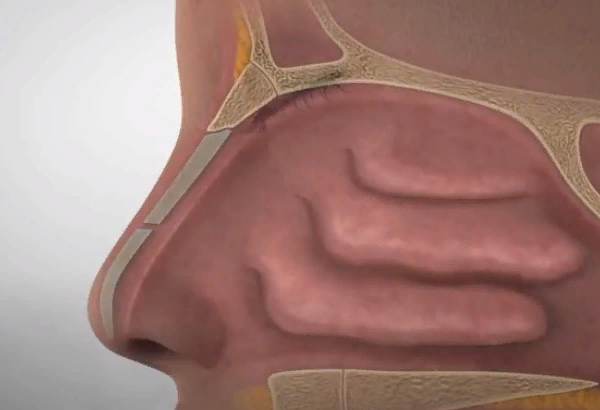What are allergies, and why do so many people have them? Allergies are the immune system’s overreaction to a substance that is usually harmless. Whether it’s pollen, dust mites, or even certain foods, the body mistakenly treats these substances as threats, triggering symptoms like sneezing, itching, or swelling. Allergies affect more than 50 million Americans every year, making them one of the most common chronic conditions in the United States, according to the American College of Allergy, Asthma & Immunology (source). Let’s explore why allergies are so widespread and what we need to know to better manage them.
Prevalence of Allergies by Age Group
| Age Group | Allergy Prevalence (%) |
|---|---|
| 0-10 years | 60% |
| 11-20 years | 50% |
| 21-40 years | 40% |
| 41-60 years | 30% |
| 61+ years | 20% |
This histogram shows the prevalence of allergies among different age groups. The younger population appears to have a higher prevalence, which may reflect environmental exposure and genetic predispositions.
How Do Allergies Develop?
Why do some people develop allergies while others don’t? Genetics and environment play a crucial role. If one or both of your parents have allergies, there is a 60-80% chance that you’ll develop allergies too. Environmental exposure also matters—a person raised in a city might have different allergy triggers than someone from a rural area.
Interestingly, modern living conditions may contribute to the rise in allergies. The “hygiene hypothesis” suggests that less exposure to germs during childhood may prevent the immune system from developing properly, leading to more allergies. In fact, a 2023 study published in Nature indicated that children who grow up on farms, where they are exposed to a broader range of microbes, have a 30% lower rate of allergies compared to children raised in urban environments.
Did you know?
According to the CDC, more than 10% of adults and 7.5% of children in the U.S. suffer from food allergies.
What Are the Most Common Allergies?
What are the most common substances people are allergic to? Allergies can be caused by a wide range of substances, but the most common allergens include:
- Pollen: This is the main culprit for seasonal allergies and affects about 25 million Americans every year.
- Dust Mites: These microscopic creatures live in household dust and can trigger asthma and allergy symptoms.
- Foods: The most common food allergens include peanuts, tree nuts, shellfish, milk, eggs, and wheat.
- Animal Dander: Pets like cats and dogs produce proteins that can cause allergies in some people.
- Insect Stings: Allergies to bee stings can be severe and, in rare cases, life-threatening.
How Can You Tell If You Have Allergies or Just a Cold?
Is it allergies or a common cold? Sometimes it’s hard to tell the difference. Both allergies and colds can cause symptoms like sneezing, congestion, and a runny nose. However, allergies generally don’t cause a fever, and symptoms can last as long as you are exposed to the allergen—sometimes weeks or even months. A cold, on the other hand, usually resolves in about 7-10 days and is often accompanied by body aches or fever.
Duration of Allergy Symptoms vs. Cold Symptoms
| Condition | Average Duration (Days) |
|---|---|
| Allergy Symptoms | Weeks to Months |
| Cold Symptoms | 7-10 Days |
This histogram compares the duration of symptoms between allergies and the common cold. Allergy symptoms can last much longer—ranging from weeks to even months—while cold symptoms usually resolve within 7-10 days.
Here’s a simple comparison to help you figure it out:
| Symptom | Allergies | Cold |
|---|---|---|
| Duration | Weeks to months | 7-10 days |
| Fever | Never | Sometimes |
| Body Aches | Rarely | Common |
| Itchy Eyes | Common | Rare |
| Response to Antihistamines | Improvement likely | Little to no effect |
Managing Allergies: What Works?
How can allergies be managed effectively? Managing allergies starts with reducing exposure to allergens and using medications when necessary. Here are some strategies:
- Avoid Triggers: Identify and avoid known allergens. For instance, during pollen season, keep windows closed and use air purifiers indoors.
- Medications: Antihistamines, decongestants, and nasal corticosteroids are common options for managing symptoms. Popular over-the-counter antihistamines like loratadine (brand name: Claritin) can cost between $10-$20 for a month’s supply.
- Allergy Shots (Immunotherapy): For people with severe allergies, immunotherapy may help reduce symptoms over time. This involves a series of shots that help the body get used to the allergen. Did you know? Immunotherapy can reduce allergy symptoms by up to 85%, according to a study from The Journal of Allergy and Clinical Immunology.
Did you know?
Allergic rhinitis, also known as hay fever, affects about 19.2 million adults in the U.S. and can severely impact daily activities and sleep quality.
Effectiveness of Different Allergy Treatments
| Treatment Method | Effectiveness (%) |
|---|---|
| Antihistamines | 70% |
| Nasal Corticosteroids | 80% |
| Allergy Shots (Immunotherapy) | 85% |
| Avoiding Triggers | 60% |
This histogram shows the effectiveness of different allergy treatment methods. Immunotherapy, such as allergy shots, has the highest effectiveness rate, while avoiding triggers can also be effective, but is often harder to implement consistently.
Are Allergies Getting Worse?
Why does it feel like more people have allergies nowadays? Allergy prevalence is indeed on the rise, and climate change might be a significant factor. Warmer temperatures extend the growing season for plants, which means more pollen in the air for longer periods. A study by the American Academy of Allergy, Asthma & Immunology (AAAAI) found that the pollen season in North America is now 20 days longer on average than it was in the 1990s, leading to increased symptoms for allergy sufferers.
Our Editorial Team’s Advice
Allergies can be frustrating, but understanding your triggers and taking proactive measures can make a world of difference. Use this knowledge to control your environment, limit exposure, and consult your doctor about appropriate treatments. Remember, knowledge is the first step toward a sneeze-free day!
About the Author
Reyus Mammadli is the author of this health blog since 2008. With a background in medical and biotechnical devices, he has over 15 years of experience working with medical literature and expert guidelines from WHO, CDC, Mayo Clinic, and others. His goal is to present clear, accurate health information for everyday readers — not as a substitute for medical advice.







